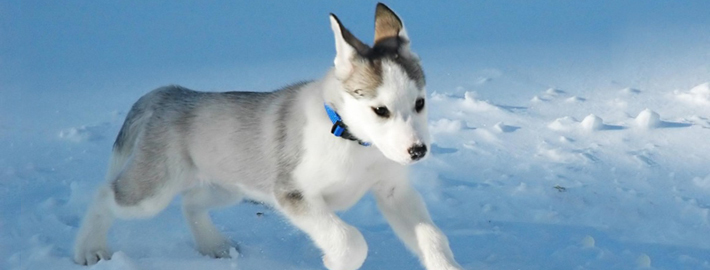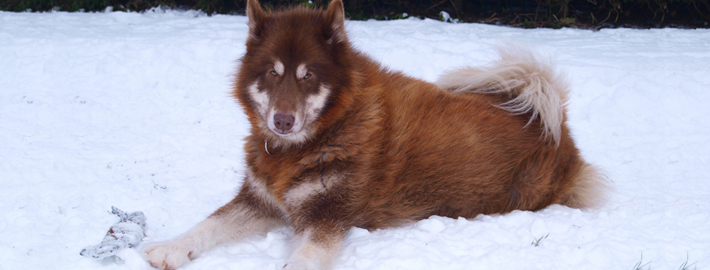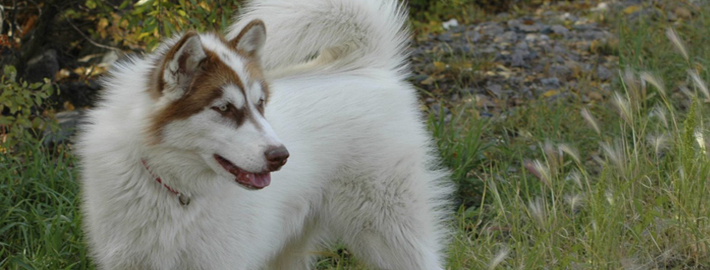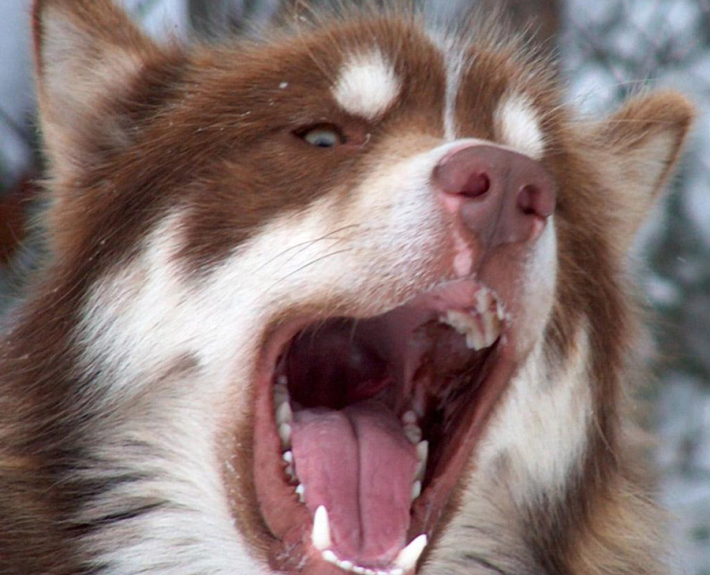What makes the Canadian Eskimo Unique?
Although they are not recommended for families with small children, Canadian Eskimo Dogs are loyal and energetic animals that love nothing better than having a job to do. Members of this breed make great sled dogs for an experienced owner.
Breed Groups
Page Contents
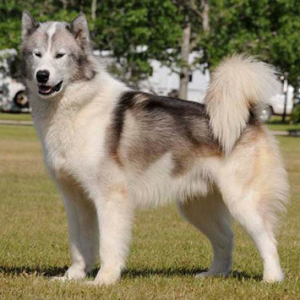
Is the Canadian Eskimo Right For You?
The Canadian Eskimo Dog is a breed of working sled dog native to the far north of Canada. This ancient breed is famous for its ability to survive and work in some of the most difficult and challenging environments on the planet. This dogs are incredibly loyal to their owners and often bond with one person or family, they are usually not aggressive towards unfamiliar people.
Canadian Eskimo dogs can be domineering and stubborn, which means that they require an owner with plenty of experience, preferably one that has handled sled dog breeds in the past. These dogs will also need to be heavily socialized with children from a young age to prevent them from regarding youngsters as a threat to their own well-being.
In 5 Words
- Alert
- Loyal
- Brave
- Tough
- Intelligent
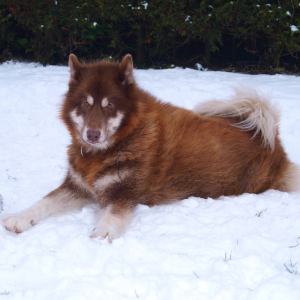
Characteristics
Learn About the Canadian Eskimo
Description
General Description
Canadian Eskimo Dogs greatly resemble medium-sized American wolves. However, the dogs have shorter and curvier tails than their wild counterparts. They also lack the black wrist markings that are characteristic of European wolf breeds. Canadian Eskimo Dogs are part of the Spitz family of dogs. Therefore, they have the typical curly tails and thick coats that their kin do. These dogs also have strong, muscular bodies that are well-suited for working in harsh Arctic environments. Canadian Eskimo dogs typically have dark colored, yellow or hazel eyes. Blue eyes are considered by the United Kennel Club to be a disqualifying flaw. These dogs also have wedge-shaped heads, broad skulls, short necks, and tapered muzzles. Their teeth should meet in a scissors bite. Erect ears with rounded tips are yet another breed feature. Canadian Eskimo dogs also have round feet and muscular limbs. These dogs should move at a brisk trot.
Size
Males of this breed are much larger than the females. They weigh around 66 to 88 pounds (30 to 40 kilograms) and stand between 23 and 28 inches (38 and 70 centimeters) in height. In comparison, female dogs stand 20 to 24 inches (50 to 60 centimeters) tall and weigh between 40 and 66 pounds (18 and 30 kilograms) on average.
Coat
Canadian Eskimo dogs possess a thick, weather proof double coat. The outer layer is long and thick, while the inner layer contains stiff hairs that are only somewhat shorter than those on top. Male dogs have a thicker layer of fur around their necks than the females do. Dogs that are solid silver, black, or white are fairly common. Members of this breed may also have patches of other hues on their bodies or on their heads. Mask-like markings and white socks are likewise typical of this breed.
Short History of the Canadian Eskimo Dog
Canadian Eskimo Dogs are thought to date as far back as 1100 A.D. when the Inuit people and their pets arrived in the area that was to later become Canada. Members of this breed are very closely related to the Greenland dog. Eskimo dogs are among the oldest indigenous breeds in North America. They are also one of the few native Canadian dog varieties.
Early members of this multi-purpose breed were used to pull sleds, hunt game, and carry goods. Canadian Eskimo Dogs became especially popular during the arctic explorations that took place in the 19th and 20th centuries, but demand for these dogs began to wane once snowmobiles became prevalent in the region. This breed was eventually recognized by the United Kennel Club in 1996.
Temperament
Canadian Eskimo dogs were created to work hard while enduring a harsh outdoor environment and their personalities reflect that fact. This breed is not one that can simply be a pet instead. They must have some task to keep them busy. Although Canadian Eskimo dogs are incredibly loyal to their owners and often bond with one person or family, they are usually not aggressive towards unfamiliar people. These dogs can be quite aloof towards all human beings and are not generally considered to be a particularly affectionate breed. In fact, these dogs often don’t welcome attention from anyone other than their preferred human companion. However, this is not to say that they are not devoted to their families. These dogs have been known to go so far as to sacrifice themselves to protect their human family members. These dogs are nonetheless best suited for adult owners rather than households with young children. However, well-trained dogs that have grown up around children should be perfectly fine around members of their own households.
Caring for Your Canadian Eskimo
General Health
As a direct result of being bred in an Arctic environment where most diseases cannot survive, the Canadian Eskimo dog does not have a strong immune system. However, members of this breed are typically quite healthy. Problems have been known to arise from time to time and owners should be on the lookout for signs of hip dysplasia, progressive retinal atrophy, epilepsy, juvenile cataracts, and monorchidism. In warmer climates, these dogs may also occasionally suffer from heatstroke.
Care
Daily
Canadian Eskimo Dogs are energetic animals that need copious amounts of exercise on a daily basis. Simply walking these dogs once per day is not going to be sufficient for their needs.
Weekly
Members of this breed need to be brushed once or twice a week. However, during periods when the dog is shedding heavily, they will need to be groomed on a daily basis.
Monthly
Flea, tick, and heartworm prevention medications are typically given to dogs on a monthly basis for best results.
Grooming & Bathing
These dogs should be bathed if they get dirty and their nails should be kept trimmed.
Exercise & Training
Canadian Eskimo dogs can be domineering and stubborn, which means that they require an owner with plenty of experience, preferably one that has handled sled dog breeds in the past. These dogs will also need to be heavily socialized with children from a young age to prevent them from regarding youngsters as a threat to their own well-being.
Members of this breed were created to be pack animals and, as such, they will either obey their owners or the instructions of the lead dog. Canadian Eskimo Dogs tend to be stubborn and need to be trained in a firm, consistent manner. They also display a heightened response to any form of stimulus as part of the survival instincts they needed to survive and are, therefore, too unpredictable to be around most children.
Although members of this breed are quite trainable and reasonably submissive, Canadian Eskimo dogs require more exercise than most prospective owners can provide. These dogs need to participate in activities that fulfil both their need for mental stimulation and heavy exercise. Dog sports including mushing and carting are good ways to meet these requirements.

